
This is a fairly typical evening dress of the period, featuring the ancient Egyptian motifs that were very modish after the 1922 discovery of Tutankhamun's tomb.
We also have a basic idea that these fashions looked best on a very slim, youthful figure. But women of all ages and shapes wore columnar dresses, too – as our models, here are Helen Keller and her teacher Anne Sullivan:

So clearly it wasn't impossible to get these dresses to fit correctly at the time. However, my Google Image searching has turned up some examples of anachronistic fit. In 2007, the Reedsburg Area Women's Club in Wisconsin staged a fundraising parade of dresses from 1928-1931 using club members as the models.
Looking at these pics, I felt a cognitive dissonance that I can only describe as "costume party". There was something a little wrong about the way some of the dresses fitted, in the way that a hired costume never seems to fit properly and the wearer seems awkward and self-conscious.

This model looks too tall for this 1928 dress; the dropped waist sits too high.

But this dress looks much more '1920s' on her.

This 1928 wedding dress is too small; see how it pulls across the bust and at the armholes, and digs in at the hips?

This dress is also too small in the hips.

This 1929 frock also looks much too short for the model and too tight in the bodice – much more like a contemporary fit.

But she looks much better in this 1930s-style fit.
I also came across a fascinating Tumblr called Draw This Dress, in which two illustrators, Emily Carroll and Vera Brosgol, bring to life garments from museum collections, vintage stores and historical photos. What's fascinating about this site is the way they take the dresses from their static, lifeless contexts and put them on dynamic, emotionally expressive, sometimes dishevelled bodies.
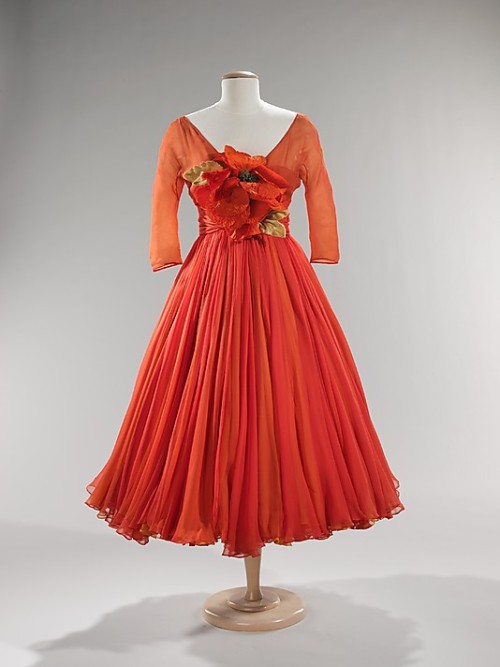
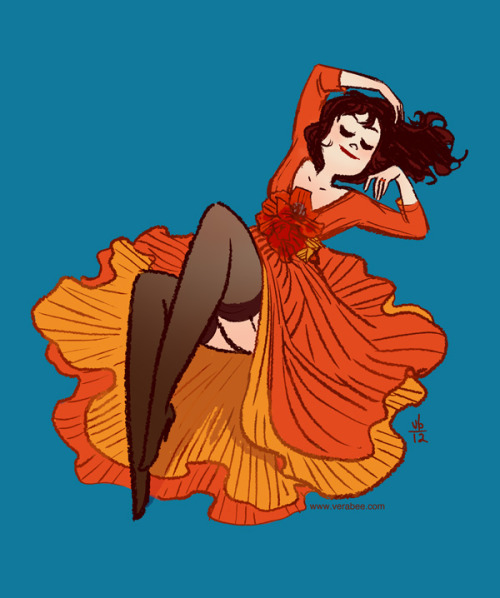
They liberally use that fashion-illustration convention of adding a weightless quality to the garments – which is very noticeable when comparing Grant Cowan's Dreaming of Dior illustrations to the actual garments in the Darnell Collection.
It's also a genre marker of fashion illustration to stylise the look of the body in the dress… although where most fashion illustration evokes a sylph-like fantasy body, many of the Draw This Dress illustrations feature a womanly figure with plump arms and legs. Meanwhile, this has to be the greatest ancient Egyptian fashion illustration of all time! Of all time!
However, sometimes I felt that Draw This Dress didn't always get the fit period-correct.
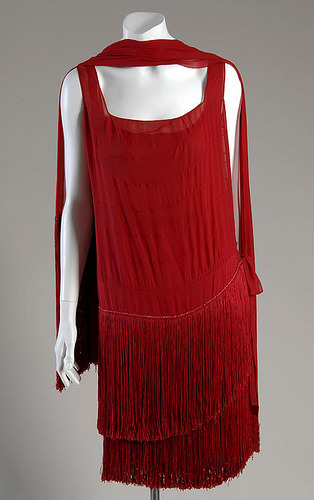

I suspect the gown wouldn't have been nearly as short when originally worn.
Still, I really like the way Brosgol has styled this 1935 'Coq de la Roche' dress by Madeleine Vionnet to resemble Princess Leia in Star Wars (costumes by John Mollo). I find this fit way less anachronistic – or rather, anachronistic in a clever way, because it makes me remember that George Lucas was partly inspired by the adventure serials of the 1930s.
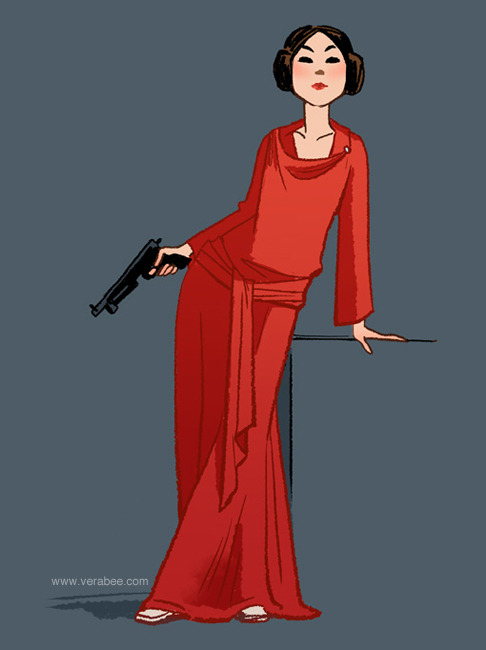
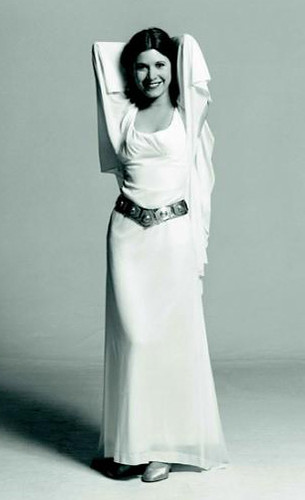

3 comments:
You make some very good points. I would add that I don't agree that the first dress is too short - for example, I am looking at a pattern illustration of a dress of similar proportion from 1926 (designers were tentatively trying higher waists from then through 1930, when they finally "took" with the general public) - but the fit is, as you say, wrong wrong wrong. If the bodice fitted as a nearly-straight tube, the overall effect would be completely different.
Just as important as the fact that most of the dresses are just a little too small for the wearers is the anachronistic underwear. Look at all those modern lift-and-separate bras! All but the slimmest and flattest-chested of women would have worn undergarments to help their bodies conform to the prevailing fashionable shape of a smooth tube. Even the woman better-suited by a 1930 dress still looks far too lumpy, uncontrolled as her flesh is - girdles, never really gone, regained importance for even slim women with the development of bias-cut skirts.
You're totally right, Jessamyn! I'm researching corsets and underwear at the moment and have a blog post up my sleeve about this…
The dresses from the fundraising parade remind me of the early 1950s movie "Singing in the Rain." All the 1920s dresses were fitted in the style of the 50s. Not pretty...
Post a Comment